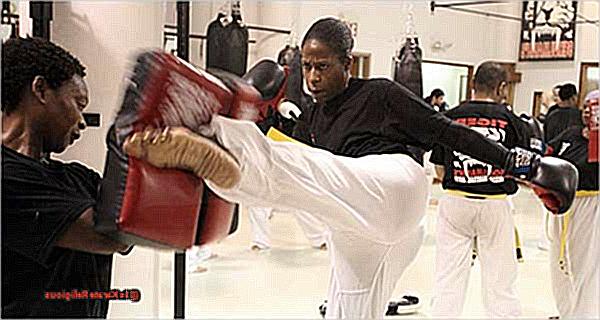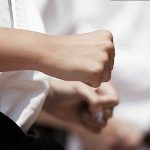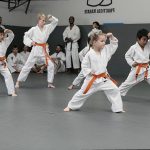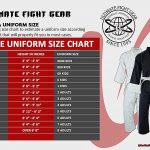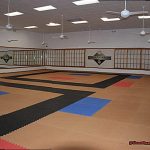Centuries ago, on the island of Okinawa in Japan, a martial art known as karate was born. Its powerful strikes and graceful movements have captured the attention and admiration of many. However, what may come as a surprise to some is the deep connection between karate and religion. Despite its physical nature, this ancient practice holds strong ties to various religious beliefs and philosophies.
- The roots of karate can be traced back to Chinese Taoism, which emphasizes the balance between the physical and spiritual aspects of life.
- The very word “karate” means “empty hand,” symbolizing the idea of being free from material possessions and relying solely on one’s own body and mind.
- Many martial arts schools incorporate Buddhist or Shinto rituals into their training, such as bowing before entering the dojo or meditating before practice.
- The moral code of karate, known as the Dojo Kun, encompasses principles like respect, humility, and perseverance – values that align with many religious teachings.
- Beyond physical training, karate also focuses on mental discipline and self-control – practices often found in Buddhism and Hinduism.
But beyond just surface-level similarities lies a deeper connection between karate and religion. For many practitioners, their training is not just about mastering techniques but also about spiritual growth. Whether you are deeply devoted to a particular faith or simply curious about different belief systems, exploring the world of karate can offer a unique perspective on how physicality intertwines with spirituality.
Karate and religion?
The impact of religion on the practice of karate is profound, as it influences its rituals, beliefs, and values. While not considered a religion itself, karate incorporates elements of Shintoism and Taoism to enhance its spiritual and philosophical aspects. These connections add depth and meaning to the martial art, allowing practitioners to not only improve their physical abilities but also their mental and spiritual well-being.
| Religion’s Influence | Explanation |
| Bowing to Shomen | In the practice of karate, bowing to Shomen (the front of the dojo) is a gesture of respect and gratitude towards the training space. This ritual originates from Shintoism, where shrines are considered sacred places. |
| Theory of Five Elements | The theory of five elements, based on Chinese Taoism, is incorporated into kata (forms) training in karate. This belief system focuses on balancing the elements of earth, water, fire, wood, and metal to achieve harmony and strength. |
| Cultivating Chi | Taoist beliefs also include the cultivation of chi (life energy) through breathing techniques and meditation. These practices are often integrated into karate training to enhance focus, concentration, and overall well-being. |
While these religious influences are present in karate, they do not require practitioners to adhere to these traditions. Karate welcomes people of all faiths and backgrounds as long as they embrace its values and principles. Religion’s role in karate is more about providing a deeper understanding of its origins and values rather than imposing a specific belief system.
Religion has a significant influence on the practice of karate through its incorporation of Shintoism and Taoism. These traditions add depth and meaning to the martial art, enhancing its spiritual and philosophical aspects. However, one does not need to believe in these traditions to succeed in karate.
Is there a link?
This question cannot be answered with a simple yes or no, as there are multiple perspectives and interpretations to consider. Some may argue that there is a direct relationship between the two, while others may view karate as a distinct entity from religion.
One perspective is that karate has been heavily influenced by religious traditions, specifically Shintoism and Taoism. These religions have a significant presence in Japanese culture and have been integrated into the rituals and values of karate. For instance, bowing in karate is seen as an act of respect and humility, which is rooted in Shintoism’s belief of honoring ancestors and nature.
Another example is the practice of kata movements, which are based on the principles of Taoism. These movements are meant to flow naturally and effortlessly, reflecting the Taoist concept of “wu wei” or non-action.
On the contrary, some argue that karate is more spiritual and philosophical rather than religious. While it may incorporate certain beliefs and traditions, it does not require practitioners to adhere to any specific religious beliefs. Instead, karate promotes self-improvement, discipline, and respect for others regardless of their personal beliefs.
In fact, one opinion suggests that karate can be considered a religion in itself, with its dedicated community, specialized clothing, and sacred spaces for practice. However, one does not have to subscribe to these religious traditions to excel in the art.
To conclude, while there may be indirect connections between karate and religion through its incorporation of certain traditions and beliefs, the practice of karate itself does not mandate a particular religious affiliation.
Conclusion
In conclusion, the ancient martial art of karate is a rich tapestry of religious influences and philosophies. Its origins in Chinese Taoism, combined with elements of Buddhist and Shinto practices, create a unique blend of physical and spiritual aspects. The Dojo Kun, or moral code, reinforces values that align with various religious teachings. However, one does not need to adhere to any specific religion to excel in karate. It is a personal journey towards self-improvement and growth, both physically and spiritually.
While some may view karate as separate from religion, delving into its connections with different belief systems can offer a deeper understanding of the balance between the physical and spiritual realms in our lives.
So, why not step onto the dojo with an open mind? You may uncover a new dimension to this powerful martial art that transcends traditional boundaries.

